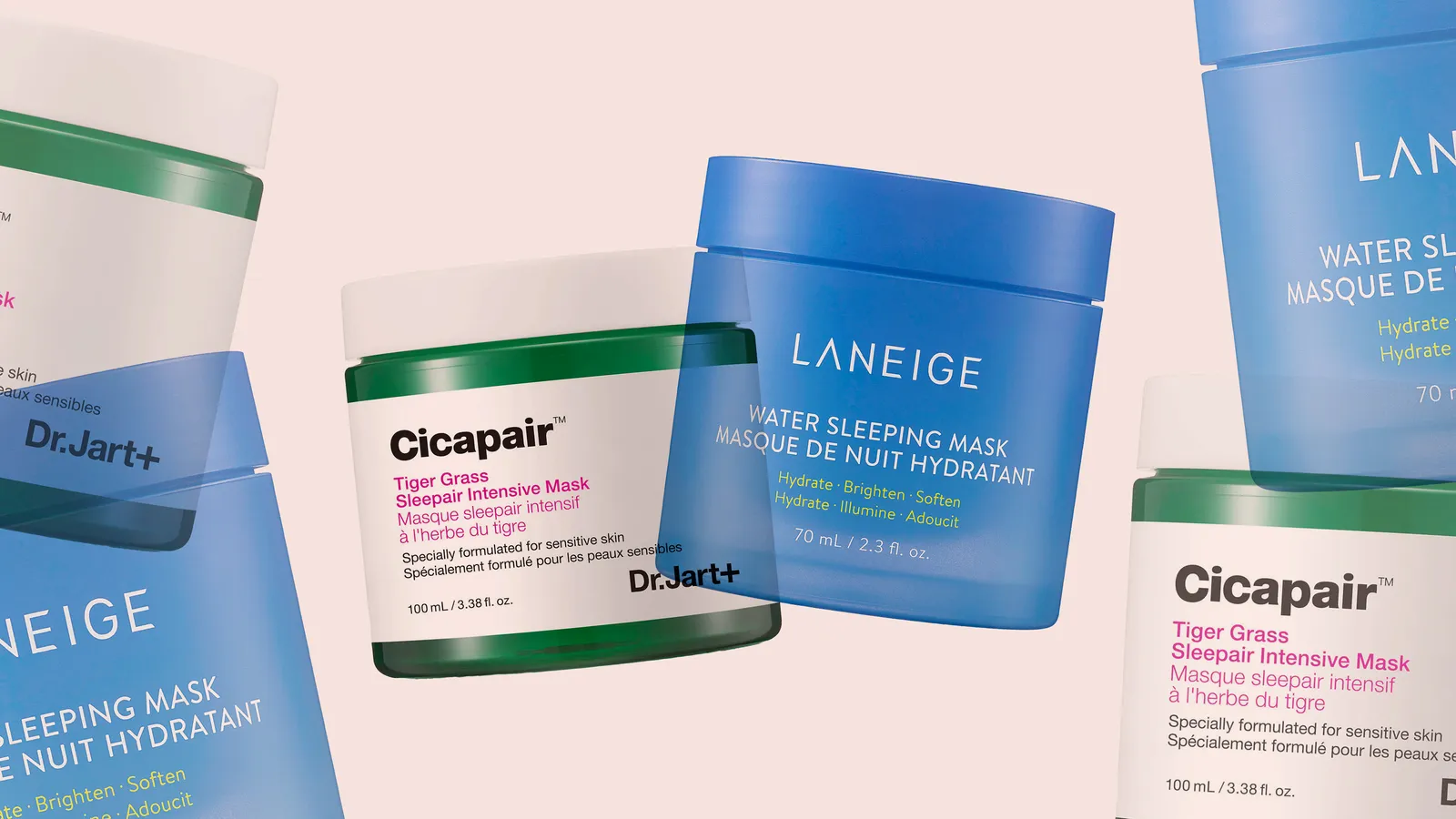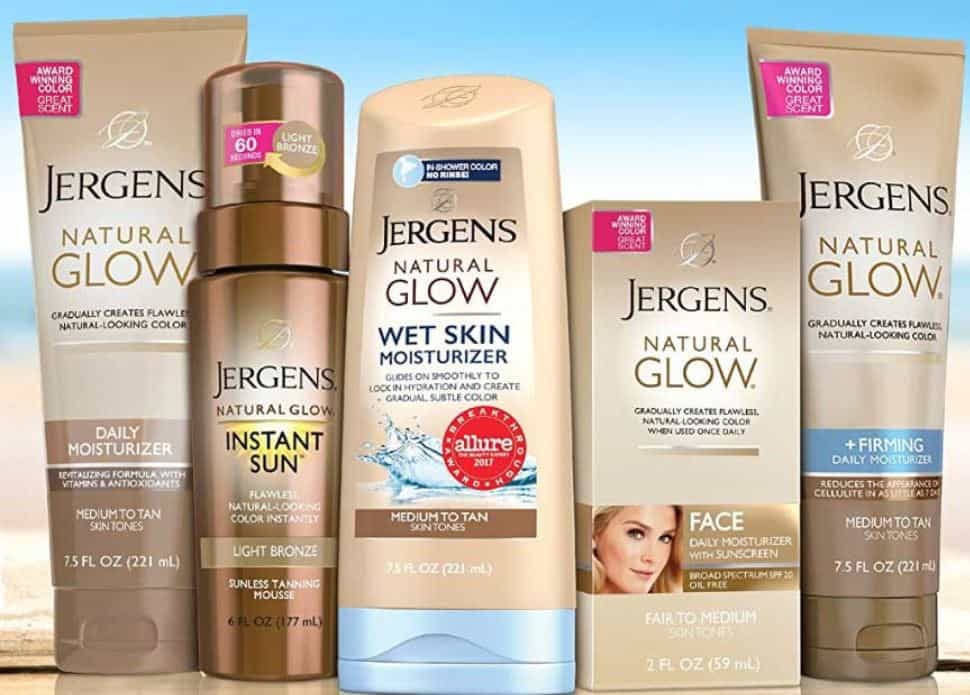Skin
Can I Use Salicylic Acid with Vitamin C?

Taking care of your skin can be challenging, particularly when mixing several active components. If you’ve been wondering whether salicylic acid and vitamin C are compatible. You’re not by yourself. Both skincare experts and beginners wonder about the advantages and compatibility of these two well-liked substances. The purpose of this essay is to dispel any misunderstandings and offer a thorough explanation of how to combine salicylic acid and vitamin C for the best possible skin health.
Understanding Salicylic Acid
What is Salicylic Acid?
Salicylic acid is a beta-hydroxy acid (BHA) that is highly effective in treating acne because of its ability to deeply penetrate pores. It functions by cleaning up the pores, exfoliating the skin, and assisting in the removal of dead skin cells from the outermost layer.
Benefits of Salicylic Acid
. Exfoliation: Encourages a smoother complexion by removing dead skin cells.
. Treatment for Acne: Maintains clear pores to minimize outbreaks.
. Oil Control: Aids in controlling the production of sebum.
Common Uses in Skincare
For oily and acne-prone skin types, salicylic acid is frequently found in cleansers, toners, and spot treatments. Additionally, it is utilized in chemical peels for a more thorough exfoliation.
Understanding Vitamin C
What is Vitamin C?
Ascorbic acid, another name for vitamin C, is a strong antioxidant that is essential for keeping skin healthy. Collagen, a protein that keeps the skin elastic and tight, is synthesized with its assistance.
Benefits of Vitamin C
. By antioxidants: Skin is protected from free radical damage.
. Brightening: Diminishes the visibility of dark patches and excessive pigmentation.
. Production of Collagen: Promotes firmness and flexibility of the skin.
Common Uses in Skincare
Vitamin C is a common ingredient in moisturizers and serums. It’s a mainstay in many morning skincare regimes because of its brightening and anti-aging qualities.
The Science Behind Combining Salicylic Acid and Vitamin C
Potential Interactions
It can be advantageous to combine salicylic acid and vitamin C, but it’s important to know how they work together. Because both are acidic, improper use may cause discomfort.
Benefits of Using Both Together
. Improved Exfoliation: Salicylic acid unclogs the pores, making it easier for vitamin C to enter.
. Brightening and Clarifying: Vitamin C brightens the skin and enhances its texture, while salicylic acid manages oil and acne.
. Better Skin Texture: Consistent use can result in skin that is more vibrant and smoother.
Possible Concerns
. Irritation: Especially for people with sensitive skin, using two strong acids together can result in redness and irritation.
. pH Balance: If salicylic acid significantly changes the pH of the skin, vitamin C’s efficacy may be diminished.
How to Safely Use Salicylic Acid and Vitamin C Together
Layering Techniques
To reduce annoyance:
. Morning Routine: To guard against free radicals, take vitamin C first thing in the morning.
. Evening Routine: Use salicylic acid to cleanse pores and exfoliate at night.
Recommended Products
To guarantee compatibility, look for formulations that are intended to work well together or select goods from the same brand.
Patch Testing
Patch testing should always be done before adding new products to your regimen. Place a tiny amount on your inner arm and observe any negative reactions after a day.
Morning vs. Night: When to Use Which?
Ideal Times for Salicylic Acid
It is better to use salicylic acid at night. The danger of sun damage is decreased by using it in the evening because it can make your skin more susceptible to sunshine.
Ideal Times for Vitamin C
When applied in the morning, vitamin C is most effective at shielding your skin from the elements throughout the day. Sunscreen should always be used after for optimal protection.
Creating a Balanced Routine
A well-rounded regimen could resemble this:
. Cleanser: moisturizer, sunscreen, and vitamin C serum in the morning.
. Evening: Moisturizer, toner, or serum with salicylic acid, and cleaner.
Who Should Avoid This Combination?
Skin Types That May React Negatively
This mixture might be too harsh for people with extremely sensitive skin or disorders like rosacea. Always get advice from a dermatologist if you’re unclear.
Alternative Options
If neither of these is tolerated by your skin, think about utilizing lower concentrations or switching up the days.
Expert Opinions
Dermatologist Insights
Before mixing active ingredients, dermatologists frequently advise introducing one at a time to see how your skin responds.
Real-Life Experiences
When these compounds are used correctly, many consumers report having brighter, clearer skin. But persistence and patience are essential.
Common Myths and Misconceptions
Debunking Myths
- Myth: You can’t use acids together. Reality: You can, with proper precautions.
- Myth: Vitamin C should only be used at night. Reality: Vitamin C is highly effective during the day with sunscreen.
Clarifying Misunderstandings
You can get the best outcomes without experiencing any irritation if you know how to utilize these components correctly and in what order.
Benefits of Using Salicylic Acid and Vitamin C Together
Enhanced Exfoliation
Salicylic acid exfoliates the skin, facilitating the efficient penetration and functioning of vitamin C.
Brightening Effects
Vitamin C improves the overall brightness of your skin by reducing hyperpigmentation and dark patches.
Improved Skin Texture
Smoother, more even-toned skin might result from using these compounds regularly.
Potential Side Effects
Redness and Irritation
Strong active ingredient combinations can cause redness and irritation, especially in sensitive skin types.
Sensitivity Issues
Sunscreen is essential because using both compounds can make your skin more sensitive to the sun.
Tips for First-Time Users
Gradual Introduction
Lower the concentrations at first, then as your skin becomes more tolerant, gradually increase them.
Importance of Sunscreen
When utilizing active substances, always wear sunscreen to shield your skin from UV rays.
Monitoring Skin Reactions
If you notice that your skin is irritated or overexfoliated, modify your program accordingly.
DIY Skincare Recipes
Homemade Salicylic Acid Toner
. Make a paste by combining a few drops of water with one or two aspirin tablets, which are a kind of salicylic acid.
. After ten minutes, clean the afflicted areas after applying.
Vitamin C Serum at Home
. Melt One tablespoon of purified water mixed with one teaspoon of powdered vitamin C.
. Beat in one teaspoon of glycerin thoroughly.
. Use within a week after storing in a dark bottle.
Conclusion
Salicylic acid and vitamin C together can be a potent addition to your skincare regimen, providing advantages including better texture, brightening, and exfoliating. To minimize irritation and get the best outcomes, it’s crucial to use them correctly. Always perform a patch test first, apply products gradually, and wear sunscreen to protect your skin. A healthier, more luminous complexion is achievable with perseverance and consistency.
Frequently Asked Questions
Can I use them daily?
Starting slowly and progressively increasing the frequency of use, it is advisable to use each ingredient a couple of times per week.
What if I experience irritation?
Lower the frequency of usage and think about using a calming moisturizer if you become irritated.
How long until I see results?
Although results can differ, many users report better skin after 4–6 weeks of regular use.
Should I apply vitamin C before or after salicylic acid?
To prevent irritation, it is often advised to take salicylic acid at night and vitamin C in the morning.
Can I use other acids with these ingredients?
Sure, but exercise caution. One new ingredient at a time, add it, and watch how your skin reacts.
Skin
Neutrogena Naturals Multi-Vitamin Nourishing Face Moisturizer Review

What does Neutrogena mean: Ugh, the struggle of dry skin. We all understand the frustration from consistently dehydrated skin, despite slathering on moisturizer. Disappointingly, natural skin care products are a culprit, resulting in tight, uncomfortable skin. Many natural products aren’t effective, but Neutrogena may offer a solution. Their natural moisturizer is loaded with vitamins to keep your face hydrated throughout the day. In this Neutrogena Naturals review, I’ll explore more about this product and its benefits.
Neutrogena’s multivitamin moisturizer is a three-ounce tube of almost completely natural ingredients. On the product description, we learn that ninety-seven percent of the ingredients are all-natural, with the remaining three percent necessary for blending the product.
According to the label, the lotion’s goal is to continually moisturize throughout the day by providing skin cells with nutrients. Neutrogena has chosen vitamins specifically for replenishing the skin, which should theoretically help keep those dry patches away. The label itself claims the product is long-lasting, so if you have a difficult time finding natural options that keep your skin hydrated, this may be a solution.
The Pros & Cons
- Chemical-free
- Multivitamins
- Antioxidants
- Dermatologist-tested
- Budget-friendly
- Not 100% natural
- Not labeled as oil-free
- Not labeled as lightweight
Features & Benefits
Core Principle
Per their website, the Neutrogena Naturals team pulls the best ingredients for skin nutrition straight from plants themselves. They aim to create products from the best nature has to offer for a simple but useful skin care approach. I think this would be great for those of us who are conscious of what we put on our skin but still want something that gets the job done and makes it feel great. With my sensitive, finicky skin, I have personally found when I’ve consistently reduced the number of chemicals going onto my skin, I’ve had increasingly better results.
Ingredients
Water, Dicaprylyl Carbonate, Glycerin, Glyceryl Stearate, Cetearyl Alcohol, Heptyl Undecylenatem, Plukenetia Volubilis Seed Oil, Cetearyl Olivate, Sorbitan Olivate, Stearic Acid, Gluconolactone, Benzyl Alcohol, Ethylhexylglycerin, Sclerotium Gum, Tocopherol, Sodium Benzoate, Fragrance, Ilex Paraguariensis Leaf Extract, Maltodextrin, Caesalpinia Spinosa Gum, Hydrolyzed Caesalpinia Spinosa Gum.
Multivitamins
What does neutrogena mean: Multivitamin is in the name of this product, and the ingredients back it up. Within this facial lotion is Tara seed and Yerba mate leaf extract, both of which provide a number of vitamins. You’ll find Vitamin C and B from both ingredients as well as Vitamin E specifically from the Yerba mate leaf extract.
Vitamin C is involved in collagen synthesis (for firmness and elasticity) and can help protect against damage from UV exposure. Vitamin B seems to be somewhat of a super vitamin for the skin, helping even out skin pigmentation (a possible remedy to those dark spots) with Vitamin B12, minimizing acne with Vitamin B5 by breaking down oils, possibly lowering cholesterol which can indirectly improve the skin, and encourage softer skin by helping the epidermis retain more moisture. Vitamin E is a powerful antioxidant. This means it helps protect your skin from the free radicals that break down your cells, creating a dull complexion and wrinkles. This vitamin can also help bad cholesterol by preventing it from oxidizing, much like Vitamin B.
When I’m looking for a skincare product, I would definitely choose one with these extra benefits when I know from scientific studies that these vitamins will help my skin. I would feel much more confident knowing my skin is truly healing from the use of these daily vitamins in my moisturizer. I like that these don’t just fix a problem, but they continue providing nutrients for the prolonged health of my skin.
Antioxidant Omega Bionutrients
The antioxidant omega bionutrients present in this skin care product is taken from the Yerba mate leaf extract as well as from lemon peel. Neutrogena uses the term “bionutrients,” but what does it mean? Bionutrients are naturally-sourced nutrients with bioactive properties, which means they interact with living tissue.
The addition of lemon peel in the ingredients is fantastic because lemon, being a bionutrient, powerfully interacts with your skin for brightening and clearing your complexion. I have added lemon juice quite often in a few homemade masks to clear my acne-prone skin, so knowing it’s in this product is a big plus for me.
The extra protection also sounds like a good option during the summer, when you find yourself spending more time exposed to the sun’s damaging UV rays. It never hurts to have an additional safeguard beneath your sunscreen. Not only that but if you’re regularly coating your under-eye circles with concealer, this sounds like it could help clear up the darker skin and fine lines. I’m visualizing this as stress-relief for your skin!
Chemical-Free
Neutrogena proudly claims that their moisturizer is completely free of harsh chemicals. This fact alone sounds like it may be a fantastic option for those of us who are very conscious about what we put on our skin. What chemicals specifically do they omit? This moisturizer doesn’t have parabens, petrochemicals, dyes, and phthalates.
Parabens are considered xenoestrogens, which imitate estrogen in the body, and have been found in malignant breast tumors as well as linked to reproductive issues. This is why researchers have warned us that it may be a good idea to consider the amount of our exposure to parabens. These haven’t been proven to cause cancer, but studies have told us it doesn’t hurt to be extra conscious.
Buy From Amazon
Knowing Neutrogena’s natural moisturizer doesn’t contain any of the possible dangers would certainly give me a peace of mind with using it. I have always preferred going the natural route whenever I could, as we all know it’s healthier. However, now that I know the real dangers involved with these chemicals, I’m even more excited about this chemical-free product. Using this natural lotion could more than likely give your health a step up, at least where your skin is concerned.
Non-Comedogenic
If you have acne-prone skin, then the non-comedogenic aspects of this moisturizer may pique your interest. Non-comedogenic simply means that it won’t clog your pores, which causes acne. For those of us with acne-prone skin, anything that doesn’t aggravate the issue is a win and a relief.
I have tried several skin care products which have done nothing but make it worse, both natural and synthetic. The fact that this moisturizer specifies it won’t clog my pores makes it a great option in my opinion.
Dermatologist-Tested
After all, dermatologists know just what to look for in skin care products regarding the use of harmful ingredients, and conversely, beneficial ingredients. You can have more confidence in trying this moisturizer due to the fact that doctors have tested it and reviewed it for its authenticity, effects, and preferred uses.
Cruelty-Free
I am an animal lover, so one of the greatest aspects other than the health benefits of this product, is that they are cruelty-free. I can feel fully supportive and happy with a product when I know animals weren’t tested in the process. Several mainstream companies put animals at risk while their products are being perfected, and I personally don’t like thinking that these innocent creatures had to suffer to bring me a beauty product.
The General Consensus
Across the web, people share varied experiences with this moisturizer. From customer reviews, numerous individuals with positive experiences adore the lotion. On the opposite spectrum, a handful of negative reviews exist regarding allergic reactions. However, some customers claim it was mostly just alright.
Generally, it appears that the positive outweighs the bad, with the neutral results coming in second, and the negative reviews landing in the minority.
Overall Positive Results:
- Moisturizing
- Brighter, clearer skin
- Fewer breakouts
- Smoother, supple skin
Overall Negative Results:
- Thick; not lightweight
- Doesn’t absorb quickly
- Some find it has a strange scent
Final Thoughts
The solution is worth exploring, especially when natural products are remarkably healthier. Additionally, it is difficult in our commercialized world to find a product without damaging additives.
Neutrogena’s natural face moisturizer could help solve this issue by providing numerous vitamins for direct application on our most absorbent organ. The lotion provides antioxidants specifically to combat wrinkle-causing free radicals. Additionally, it is free from harsh chemicals, which means fewer health concerns.
Skin
Healing and Hydration: The Best Natural Night Cream

Beauty’s Secret Weapon: Night Creams
The Benefits of a Night Cream
Let’s be honest: dry, flaky skin is a real issue. Night creams can honestly make such a difference when it comes to tight, stripped, and raw skin. Night creams work differently than daily moisturizers. Regular face lotions are ideally lightweight, oil-free, and have the perfect amount of hydration while providing an even base for makeup. Many daily moisturizers even include sunscreen for filtering out those damaging UV rays during the day. Night creams, on the contrary, are thick.
These creams quite often need to be scooped from a container and spread onto our skin. These creams are chemically engineered to follow your body’s natural process of repairing itself during your sleep cycle. They work with your skin’s healing abilities at night to provide ingredients for extra nourishment and greater repair. Beyond that, though, let’s talk anti-aging. If you’ve noticed fine lines and wrinkles, night creams could potentially work wonders for you. Most of the creams we will be discussing are not only super-hydrating products but their natural chemistry helps with preventing signs of maturing skin. It’s always a gut-wrenching moment when you think you spot a wrinkle or notice a line forming on your skin. I would personally much rather invest in a high-quality, natural cream than let those lines have their way.
Why All-Natural Creams?
What to Look For When Comparing Natural Night Creams
Our Top 5 Picks: Natural Night Cream Reviews
1. Eva Naturals Vanilla Bean Night Cream
Who would love this?
PROS
- Green tea, coconut oil, and rosehip for superior repair
- Doesn’t clog pores
- Non-greasy
- Lightweight
CONS
- Not labeled as ideal for all skin types
- Some complaints that it has a fake vanilla scent
2. Bee-Friendly Skin Care Night Cream
Who would love this?
PROS
- 80% organic
- Olive oil and honey for superior hydration
- Cruelty-free
- Ideal for all skin types
- Won’t clog pores
CONS
- Greasy
- A little pricey for the 2 oz jar size
3. Neutrogena Naturals Multivitamin Hydrating & Nourishing Facial Night Cream
Who would love this?
PROS
- 97% Natural
- Packed with hydrating and healing vitamins
- Dermatologist-recommended
- Non-greasy; Won’t clog pores
- Very affordable
CONS
- Not labeled as ideal for all skin types
- Not 100% natural
4. Andalou Naturals Roses Heavenly Night Cream
Who would love this?
PROS
- Organic
- Cruelty-free
- Dermatologist-tested
- Doesn’t clog pores; Non-greasy
- Great for sensitive skin
CONS
- Not labeled as ideal for all skin types
- Some complaints that it isn’t as moisturizing as expected to be
5. Era Organics Super Hydrating Oasis Natural Facial Cream
Who would love this?
PROS
- 100% Natural
- Cruelty-free
- USA-made
- Doesn’t clog pores
- 16 hydrating & healing natural ingredients
- Ideal for all skin types
CONS
- Not exclusively a night cream
- Only comes in a 2 oz jar
The Best Night Cream – Conclusion
When considering these options for night creams, there is one in particular that stands out slightly above the rest. As you consider a natural night cream, you’ll want to find one that is thick, yet not greasy or pore-clogging. You’ll want a cream within your price range, but still high-quality with numerous natural ingredients for healing, hydration, and repair. Ideally, even though it’s natural, you’d still like it to be dermatologist-tested, just to be safe, as certain natural creams can still cause harsh reactions.
As we evaluate all of these criteria, it becomes obvious that the Andalou Naturals night cream is the clear winner of the group. We mentioned in the review that it seems to check off all the boxes for a preferred night cream, and that still stands. This product is filled with healing, soothing, and hydrating ingredients from roses and pomegranates, which truly seem to be a superfood for our skin’s nourishment. The cream is dermatologist-tested, and to top it off, cruelty-free. Though perhaps not considered cheap, this night cream is still within a fairly affordable range. All five of these night creams would likely work incredibly for our purpose, but it does seem that the Andalou Naturals cream ranks in first place as the best natural night cream for the face.
Skin
Jergens Natural Glow Daily Face Moisturizer Review

Jergens natural glow reviews fair to medium: It’s that sunny time of year! Picnics, days at the beach, and my super pale face. Part of taking good care of my skin means that I use SPF moisturizer every day and I typically avoid the sun. While this earns me a thumbs up from my dermatologist, it also means that my face is lacking that gorgeous, shimmering, kissed-by-the-sun look. I have tried many products to fake bake, with no luck. That changed when I purchased Jergens Natural Glow Daily Face Moisturizer.
Sunshiny Skin Damage Free
Jergens Natural Glow Face Daily Moisturizer offers a safe alternative to catching rays, and possibly catching skin cancer. I love that this product is formulated as a duo: effective moisturizer and skin bronzer to give your skin that soft, sun-kissed look. It is designed for complexions ranging from Fair to Medium and Medium to Tan. Jergens Natural Glow Face Daily Moisturizer creates a natural-looking color that lasts longer than other sunless tanners I have tried. This formula is a wonderful adoption to the skin care regimen of anyone that is looking for a natural boost of color that will produce a healthy, sun-bronzed radiance without harmful UVA or UVB rays.
- 2 oz bottle
- SPF 20
- ‘Fair to medium’ and ‘medium to tan’ skin tones
- Oil-free
- Non-comedogenic
- Active ingredients: OCTINOXATE 6.0%, OXYBENZONE 2.0%
THE GOOD & THE BAD
- Leaves my skin feeling soft, supple, and full of moisture, unlike other facial sunless tanning creams I have previously tried.
- Gradually colors my Fair skin to a lovely, healthy, sun kissed glow, and is backed by Jergens Natural Glow Guarantee.
- Contains SPF 20 to protect skin from dangerous sunlight rays.
- Great price and easy for you to find in local stores or through online stores.
- The lotion can stain hands if you forget to wash them with soap and water after application.
- Darker skin tones may not see any color development.
- You may still need to use an additional moisturizer if you are someone that suffers from very dry skin.
Features & Benefits
Let’s take a closer look at what some of Jergens Natural Glow Face Daily Moisturizer’s features and benefits are.
Safety and Effectiveness
Broadband SPF Protection
Scents and Sensitive Skin
Bronzed Goddess
INGREDIENTS
Customer Feedback
This particular line of products by Jergens has thousands of positive reviews across various websites and social media platforms by regular, everyday people like you and me. It can be hard to trust celebrity endorsements, since they are rewarded monetarily for touting the alleged effects of beauty products. When I am able to read real reviews on websites that are positive, I feel more confident in a product.
Jergens natural glow reviews fair to medium: Some users have called the formula an amazing breakthrough, stating that it looks completely and totally natural, that it is also extremely easy to apply, has no streaking or orange color, and that it is truly the best sunless tanners they have ever tried. With over 500,000 likes on Facebook, Jergens also has a loyal and positive social media following. Some members love that it is less expensive, and more effective than pricier brands, and that it is easily found in local stores. The Jergens official website also includes detailed reviews, with a high approval rating of happy customers that highly recommend this product.
The Bronzed Bottom Line
Jergens Natural Glow Daily Face Moisturizer is a revolutionary skin care product that I really like and believe in. But honestly, you don’t have to take just my word for it. You can read many glowing reviews on various websites, or look at the list of Allure Best of Beauty and Readers’ Choice Awards for the last eleven years. This formula not only helps your skin to achieve the illusion of healthy luminosity, but it helps to safeguard your skin from the harmful effects of the sun. The bottom line is that this economical product is a great addition to your current skin care routine if you would like to have nourished, glowing, radiant skin without the effects and hazards of traditional sun tanning.
-

 Skin10 months ago
Skin10 months agoNatural Oil-Free Face Moisturizer Reviews & Buyers Guide
-

 Hair10 months ago
Hair10 months agoDoes a Flat Iron Kill Lice? Fact or Myth?
-

 Hair2 months ago
Hair2 months agoDoes a Flat Iron Kill Lice? Fact or Myth?
-

 Skin9 months ago
Skin9 months agoAbout Face Beauty: Tips for Enhancing Your Natural Beauty
-

 Skin7 hours ago
Skin7 hours agoNeutrogena Naturals Multi-Vitamin Nourishing Face Moisturizer Review
-

 Hair10 months ago
Hair10 months agoFunction of Beauty: Personalized Hair Care for Your Unique Needs
-

 Skin9 months ago
Skin9 months agoBeautiful Nails: Tips and Tricks for Healthy and Gorgeous Nails
-

 Hair1 day ago
Hair1 day agoTitanium Flat Iron vs Ceramic
